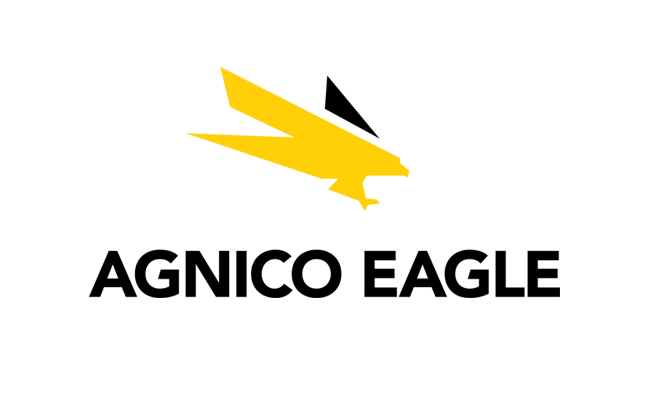by Hubert Marleau, Market Economist, Palos Management
Given that we have witnessed a radical transformation of the Middle East, now that Iran has been presumably de-nuked, predicting geopolitical developments there may become a less treacherous exercise. Indeed, the region may become less febrile, making the energy-rich-wealthy Gulf Arab states big winners, thereby increasing the likelihood that they may accept the 2020 Abraham Accords, which officially recognized Israel for good.
Consequently, domestic economic conditions should recover their balance, which in turn will determine what the Fed’s monetary stance will be. In just two weeks, we will know what Trump’s tariff policy will actually be. That is when the Fed Chair will take a position. At this point, however, the space is grey: the effects of tariffs will depend on their ultimate level, on the estimated time it takes to pass them through, on how inflation expectations will react, and in what way the supply chain will be affected or harmed or touched. Powell, meanwhile, told Congress that the case is good for rates to stay where they are for now, sticking to a “wait and see” script. He is aware that the economic data and financial metrics justify his continuing to lower interest rates, if not for concerns that forthcoming tariffs might derail the Fed’s 3-year effort to defeat inflation. While he did not rule out a July cut, it seems he would much rather wait for the Fed’s September meeting, because tariff-driven price increases will be completely known by then.
While his approach is essentially the official one, there are two Fed official dissenters and perhaps more to come. Concern that US consumer confidence melted in June across all age groups in nearly all income cohorts across the political spectrum, and that many international businesses are reporting cutbacks, postponements and cancellations of capital spending, has reduced overall optimism. Interestingly, the Swiss and the Norwegians have just cut their rates and the ECB is promising some of their own to pre-emptively mitigate trade-war impacts on their growth. In this connection, the views of Chris Waller and Miki Bowman are publicly on record favouring a cut in July, which raised the odds to 25% from 12% just ten days ago. However, I don't think this will happen until September, because there is too much resistance. First, investors are fleeing the US dollar and long-dated bonds. According to EPFR, net outflows from long-dated US bond funds spanning government and corporate debt hit $11 billion in Q2, marking a powerful shift from the average inflows in the previous 12 quarters of about $20 billion.
These aforementioned numbers provide a good proxy for investor sentiment, demonstrating the problem as to how the Treasury will manage explosive U.S. debt. This is why we have a proposed “Pennsylvania Plan” and a “Reformed Enhanced Supplementary Leverage Ratio Plan” to manage the U.S. debt by reducing reliance on foreign investors and encouraging domestic investors to buy more Treasury bonds.
As to the Pennsylvania Plan, a title coined by the Deutsche Bank, this is related to the Administration’s advocacy for stablecoins, by having cryptocurrencies pegged to the U.S. dollar, like $1.00 per coin, backed by Treasury bills and very short-term, ultra-safe assets.
The Reformed Enhancement Plan, meanwhile, is a push to exempt Treasuries from banking leverage ratios in order to increase banks’ capacity to absorb more government bonds and ease the trading of them by authorized agents. According to Goldman Sachs, the SLR reform, proposed by the Fed could free the balance sheet of US global banks by as much as $5.5 trillion. This would guarantee continuing monetary growth.
So What Went On Last Week, Ended June 27?
US stock index futures saw moderate losses Sunday night as markets re-opened after the US, on a risky gambit, bombed three Iranian nuclear sites - Fordow, Natanz, and Isfahan - in a bid to crush Iran’s ability to produce ingredients necessary for nuclear weapons, stoking fears that the Islamic Republic may retaliate by blocking the Strait of Hormuz, through which 20% of global oil supply flows. In knee-jerk fashion, the price of Brent crude promptly topped $80 a barrel for the first time in a year. This price rise did not, however, last long because the market quickly realised that there wasn't much the Supreme National Security Council, a body led by the Ayatollah, could do about the situation, acknowledging that it would hurt other countries a lot less than Iran itself. Indeed, bourses in the Middle East immediately rallied: the Tel Aviv market rose more than 1%, Kuwait's KWSE Premier index increased 0.4%, and the Egyptian market gained 2.7%, while Qatar, Bahrain and Saudi markets nudged up.
On Monday, there was living proof that Wall Street loves to climb a wall of worry - meaning that any threat, once passed, helps to catalyse a bigger advance. Iran, after warning Qatar, fired missiles on American armed forces stationed at the Al Udeid that were intercepted without casualties, suggesting that the retaliation was just symbolic. Oil prices plunged 8.6% when the market realized that the blow avoided critical energy infrastructure; and Iran was unable to either defend itself or to go on the offensive, eliminating the war premium in a single day. Instead, stocks rallied strongly on probabilities that rate cuts are coming soon. Two top Fed officials proclaimed they could support lower interest rates at the next FOMC in July to bring the policy closer to its neutral setting. The S&P 500 then jumped 57 points to 6025, responding to lower bond yields across the board.
Tuesday started with a ceasefire between Israel and Iran, ending the 12-day war in the Middle East, but it was not hunky-dory. Defense Minister Israel Katz ordered a strike on Tehran in response to Iran’s violation of the detente, which Iran denied. Because the truce got off to a shaky start, Trump angrily and furiously scolded Israel and Iran for dropping bombs on each other. Consequently hopes for a de-escalation of tension resumed, allowing AI trades to roar back in reaction to Apollo's study that companies who use AI would see their productivity increase measurably, with the price of gold slipping, and oil prices returning to where they were 12 days ago. The S&P 500 jumped 1.2% to close at 6092, only 1.0% less than its all-time high.
On Wednesday, stocks stumbled on their path to record territory, even though big tech ones raced toward new highs, finding grounds to halt the S&P 500 at 6092. Actually the session was characterised by the weak US dollar, which hit a 3-year low on report that Trump could appoint a dovish Chair for the Federal Reserve soon. The DXY fell to 97.70, down 8.0% from a year ago.
On Thursday, tech and financial stocks surged, helping the S&P 500 to trade briefly at its all-time high of 6144, but ending up 0.8% to 6142 and pulling off an 88-day rebound, stunning the bears who tried uselessly to stem the mood.
On Friday, Commerce Secretary Howard Lutnick said that the US and China had finalized a trade understanding, and that the White House had imminent plans with ten other major trading partners. In early trading Wall Street futures showed gains. The S&P 500 shrugged off the PCE print that showed a bit higher inflation in May than was expected, eclipsing its all-time high. But when Trump said he was ending trade negotiations with Canada, the benchmark marked down gains, rising 0.5% to 6170.
The Near-Term Stock Market Outlook
Last week I wrote: “It is odd that during the barrage of missiles between Israel and Iran, the effect on the various financial markets was so unnaturally dissimilar. For the most part, US benchmark crude prices jumped $13 to $75.75 over a short 2-week period. Meanwhile, the price of gold and bitcoin, traditional havens in times of conflict, fell 2.9% and 5.2% respectively. It is tempting to gloss over this, but the oddity reveals that investors were expecting this brawl to end fast. The supposition was based on the fact that Iran’s military capabilities have been so degraded that Tehran’s ability to fight back against Israel’s military superiority has been seriously compromised and that the ultimatum that was sent to Iran by President Trump gave hope for quick resolution. As a matter of fact, the 12-month futures oil contracts are selling at huge historical discounts, supporting the argument that stock investors should stay put and stay focused on earnings.”
Indeed, the S&P 500 is back to its record level, adjusting to lower bond yield, which helped evaluations; cheaper oil, which reduced input costs; and a weaker dollar, which boosted foreign revenues. Given that there is no particular reason to believe that the trend of these three aforementioned factors cannot intensify, I’m optimistic that the rally will keep on going to meet my December forecast of 6600 for 2025. In this regard, I have the support of volatility-targeting models, which are poised for the biggest-ever buying spree, from the superior price-performance of sensitive industrial metals (copper and silver) than inflation sensitive ones (gold), and of Wall Street investment banking firms. Of a sampling of 14 of the latter, only five have year-end S&P 500 targets below 6000. Indeed, looking ahead, second-quarter earnings reports are coming in mid-July, and Wall Street sees companies in the benchmark reporting 2.8% profit growth. Generally, market strategists believe that the tariff issues will be over by the end of the summer, with little impact on the profit margin of S&P 500 companies, either because many are not big importers and have sufficient pricing power to pass tariff hits on to their customers or because of profiteering from some AI productivity. “AI and robotics are huge growth opportunities.” says Nvidia CEO Jensen Huang.
Perhaps, therefore, it would be wise to be wary of bear narratives, which tend to exaggerate geopolitical issues. It’s not that one should be oblivious to risk, but unless the world blows up, history tends to be on the side of the optimists.
P.S.1 The Financial Times reported: “The US Treasury Department has called on Congress to scrap a provision in Donald Trump’s flagship budget that would allow Washington to raise taxes on foreign investments, reversing a plan that had spooked Wall Street.” The so-called “retaliatory tax” would have given the President authority to impose taxes up to 20% on investors from countries who impose what deems unfair taxes on US companies.
P.S.2 Bloomberg reported: “President Trump said he was ending all trade discussions with Canada after claiming the country moved to implement a digital service tax (DST), and threatened to impose a fresh tariff rate within the next week.” Business groups in Canada have opposed the levy, arguing it would increase the cost of services and invite retaliation by the US. Canadian Finance Minister Francois-Philippe Champagne suggested to reporters last week that the DST may be renegotiated as part of US-Canada trade discussions.
Copyright © Palos Management













